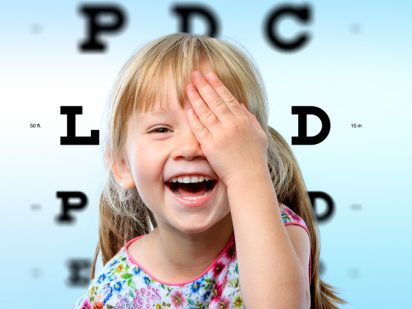It may seem like school just ended for the summer, but it is never too early to be prepared for the next school year.
In addition to the basics, such as school supplies or new clothes, a student’s health and well-being should also be taken into consideration. This includes standard hearing and vision checks and getting the proper vaccinations.
Vision Checks
The American Optometric Association (AOA) recommends that an eye examination is as essential to preparing for going back to school as getting school supplies.
A comprehensive eye and vision exam, conducted by an optometrist, can detect and test for a full range of disorders that affect children’s learning.
“As a general rule, the age at which most children should be examined depends upon their family history,” said Jill Martinson, OD, an optometrist with Trinity Heath. “If there is a strong family history of amblyopia (lazy eye) or strabismus (crossed eye), the child should have their first examination by age two.”
In absence of those factors, she said, all children should be examined prior to age five. “Other factors that can alter the recommended age of first examination include history of prematurity or developmental delays.”
“Even if a child should pass a vision screening, they should receive a comprehensive eye exam if they show signs or symptoms of a vision problem, are not achieving up to their potential, or are spending excessive time and effort to achieve academically even minimally,” the AOA said.
Signs indicating that a child has a vision problem can include:
• Complaints of discomfort and fatigue
• Frequent eye rubbing or blinking
• Short attention span
• Avoiding reading and other close activities
• Frequent headaches
• Covering one eye
• Tilting the head to one side
• Holding reading materials close to the face
• An eye turning in or out
• Seeing double
• Losing place when reading
• Difficulty remember what they read
The most common eye-related ailment in children is refractive in nature, meaning that the child’s vision could be optimized by glasses, Dr. Martinson said. “The next most common childhood ocular findings are lazy eye or crossed eye. “These conditions require a dilated examination to determine if the cause is primarily muscle-related or focus-related. In some cases, glasses may correct these conditions. In other cases, the children may require surgery.”
The incidence of lazy or crossed eye is generally 3 percent of the population and is widely influenced by family history, Dr. Martinson said, adding that the need for glasses increases as the child ages. While it is much less common, children may develop eye conditions that are typically found in older adults, such as cataracts, glaucoma, or retinal problems.
“Many of the childhood conditions are not preventable, but early detection and intervention are key,” Dr. Martinson said. “Over the last several years, doctors have noted a significant increase in the rate of myopia (nearsightedness) in children across the world. So far, the only significant modifiable risk factor for the amount of myopia a child develops is time spent outdoors. We are not certain of the exact mechanism, but research has shown to decrease the rate of myopia development. Current studies are investigating the role of medication and specialty contact lenses to help limit the amount of myopia development in childhood.”
As vision may change frequently during the school year, the AOA recommends that children receive an eye examination every year, or more frequently if specific problems or risk factors exist or if recommended by an optometrist. Be sure to schedule an eye examination with your optometrist. Jill Martinson, OD, Sierra Unruh, OD, and Brad Schimke, OD, are based at 2815 16th St SW, Minot. For an appointment or consultation, please call 701-852-3937. For an appointment at Trinity Health Western Dakota, 1321 W Dakota Pkwy, Williston, call 701-572-7641




